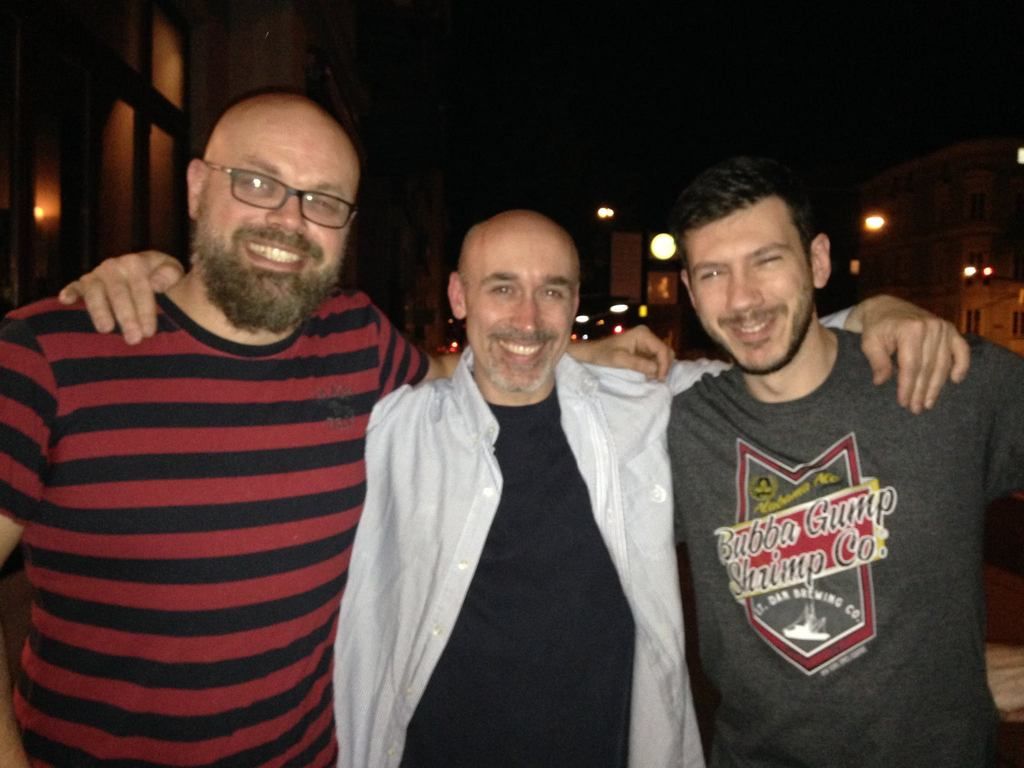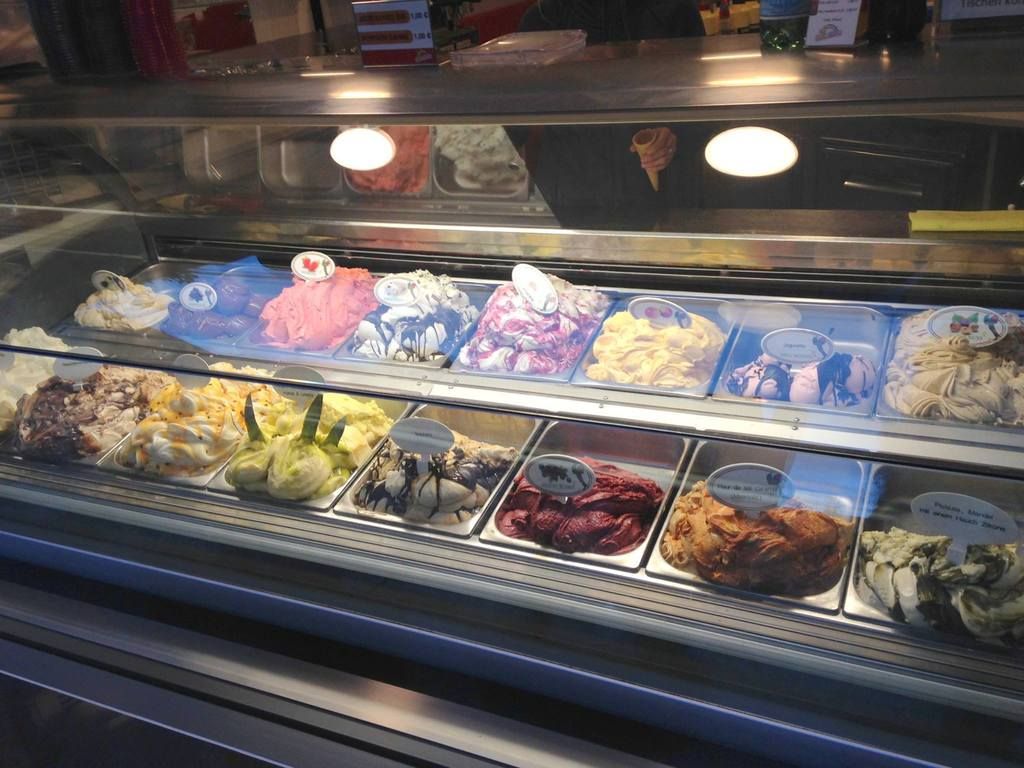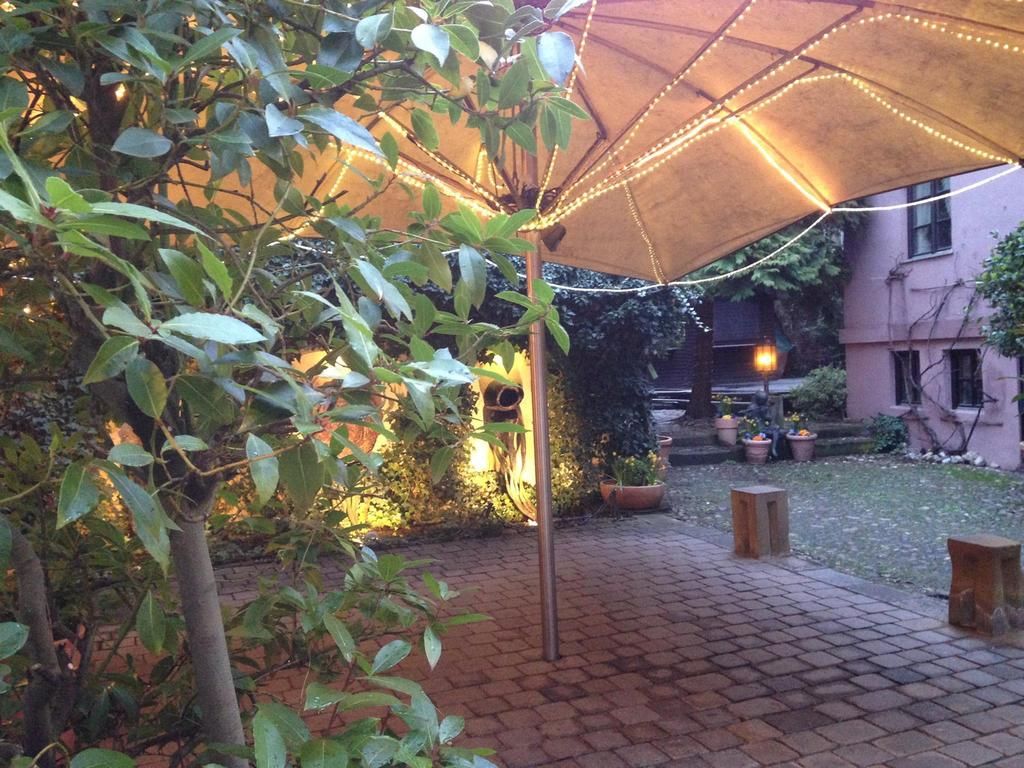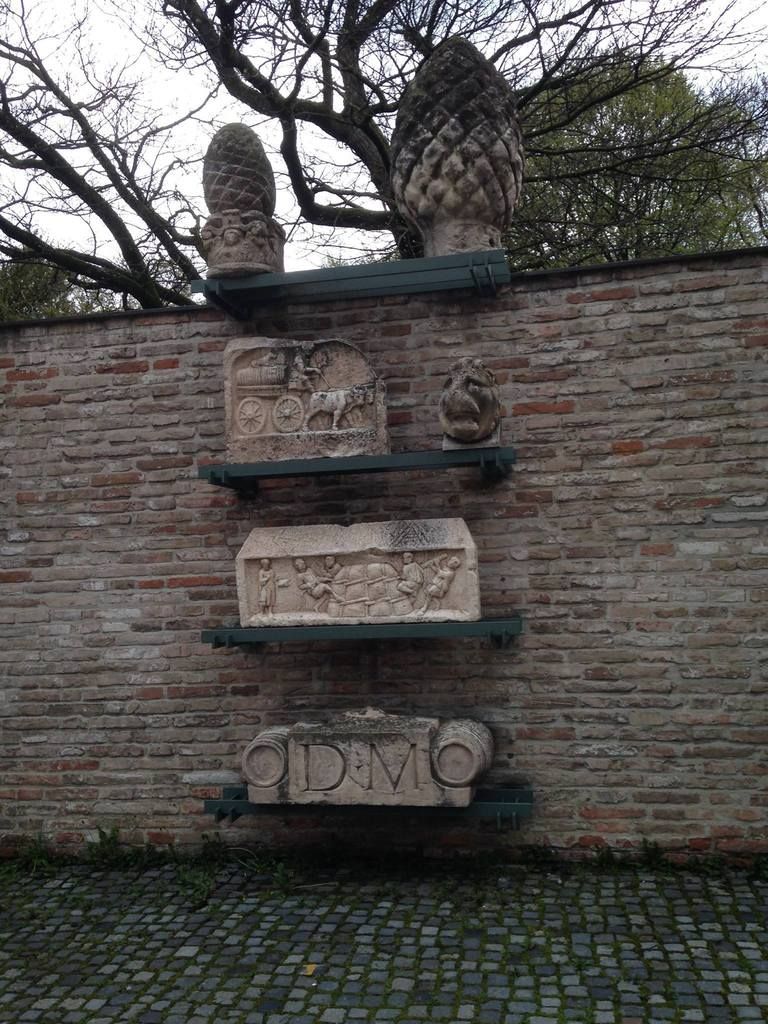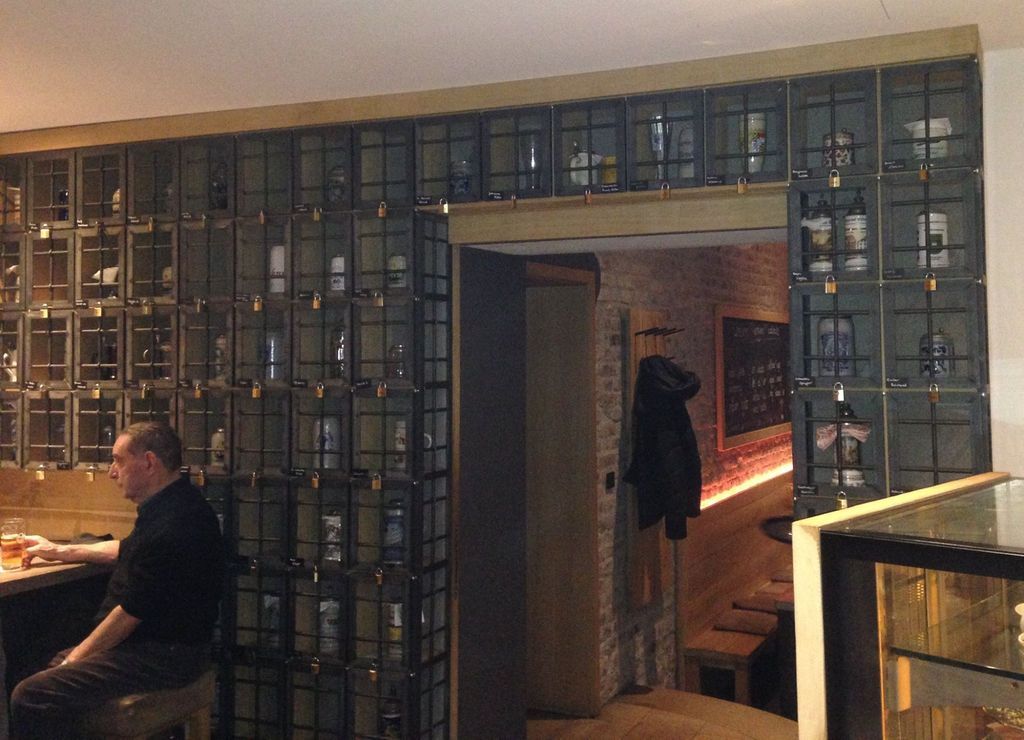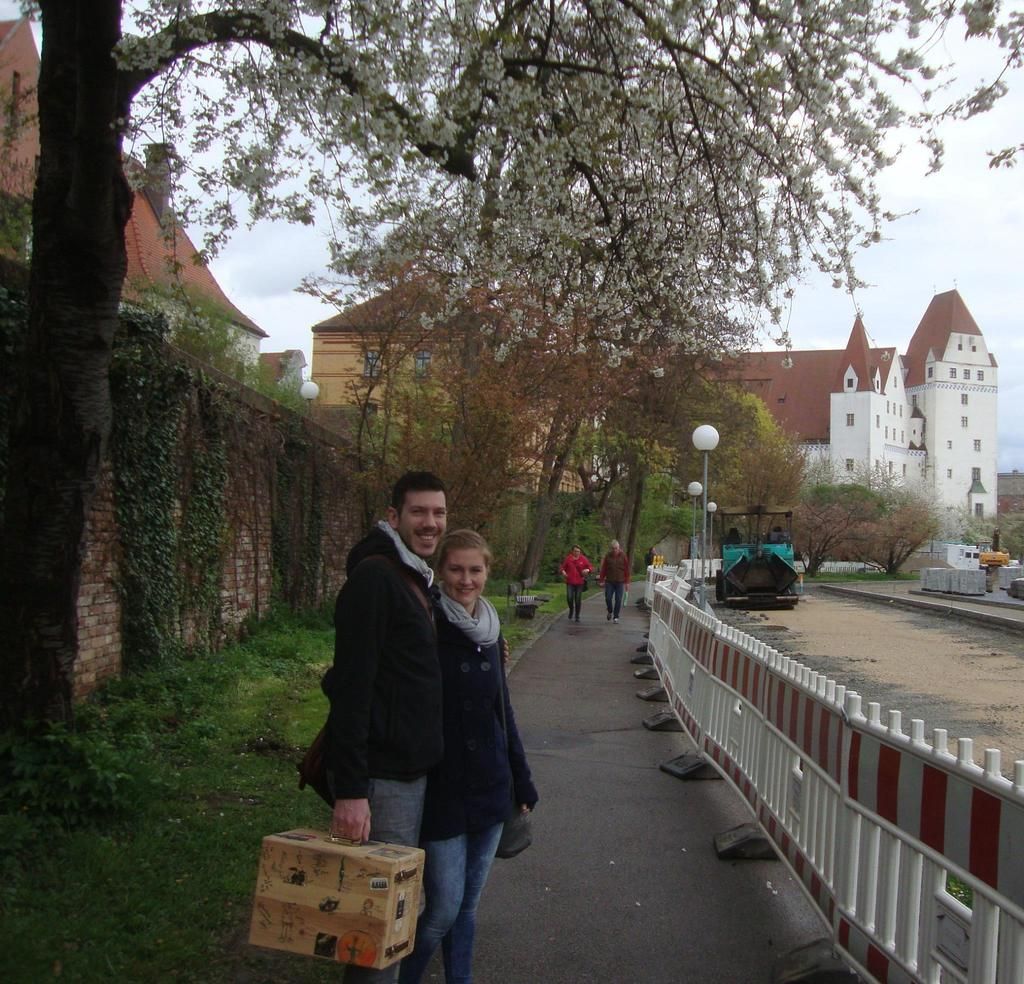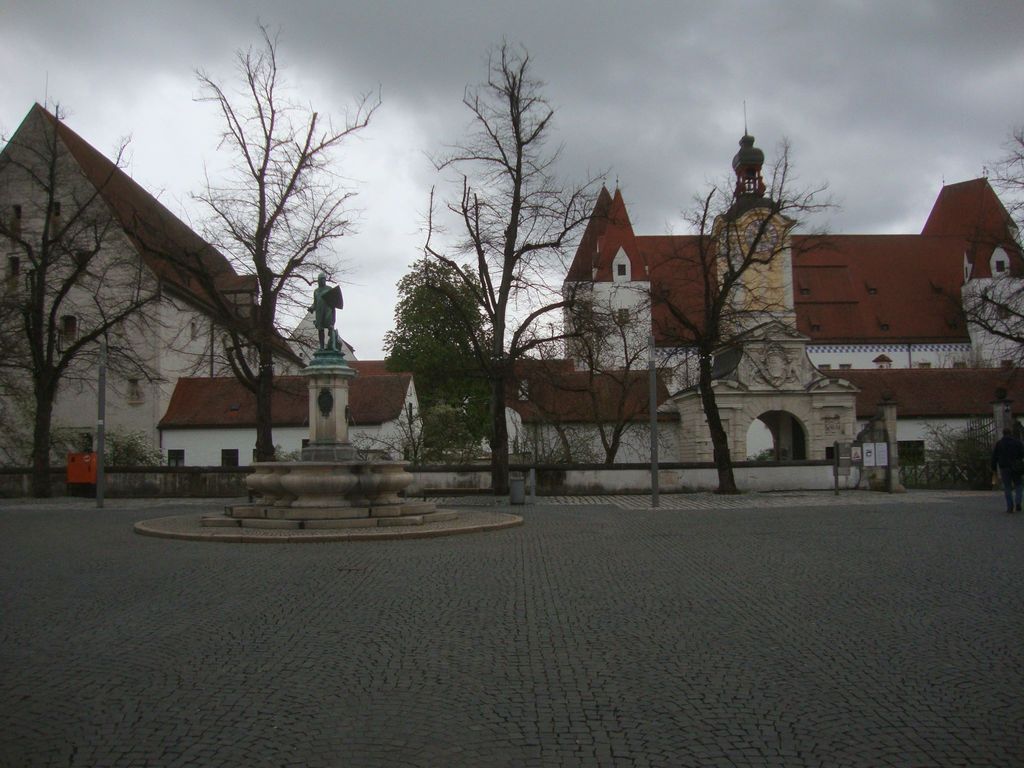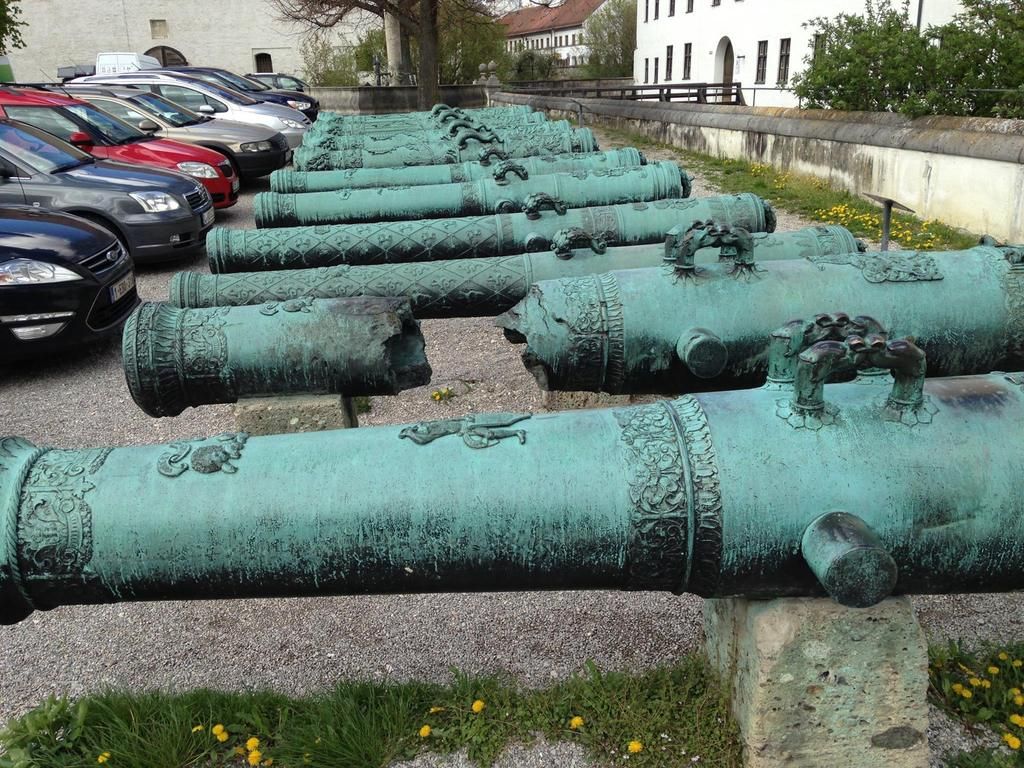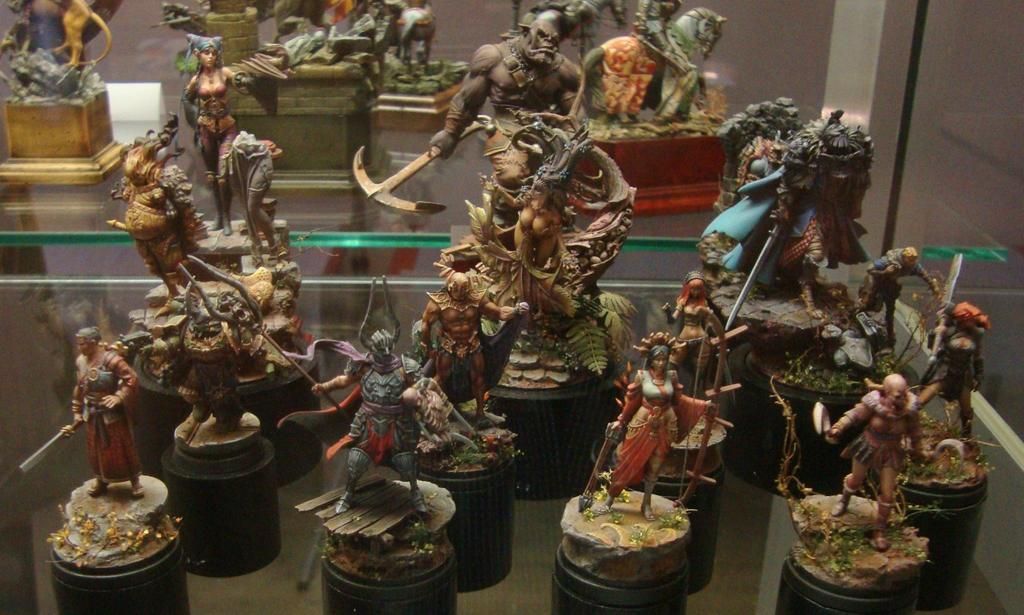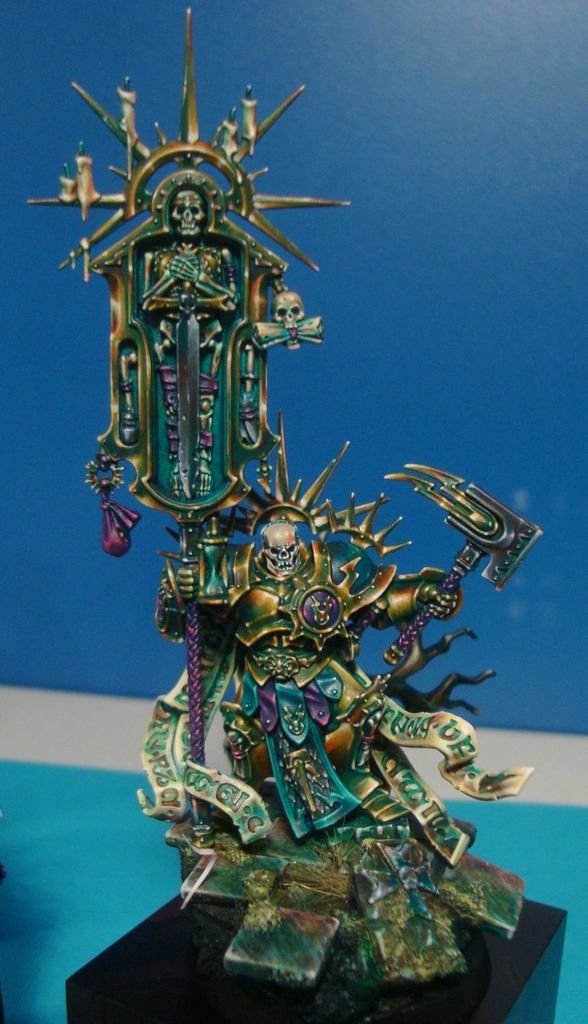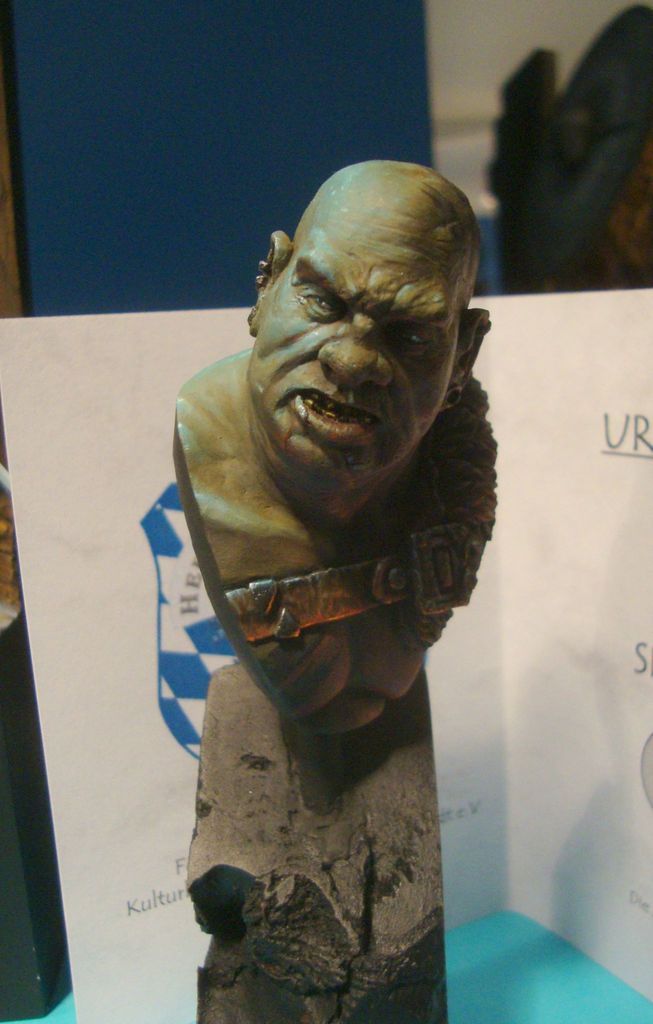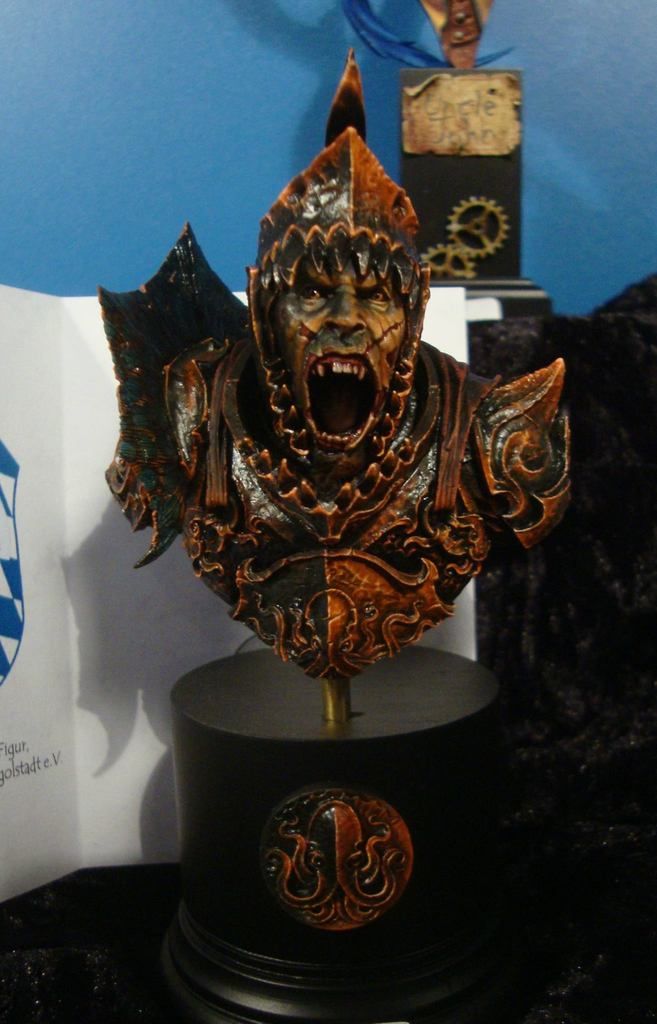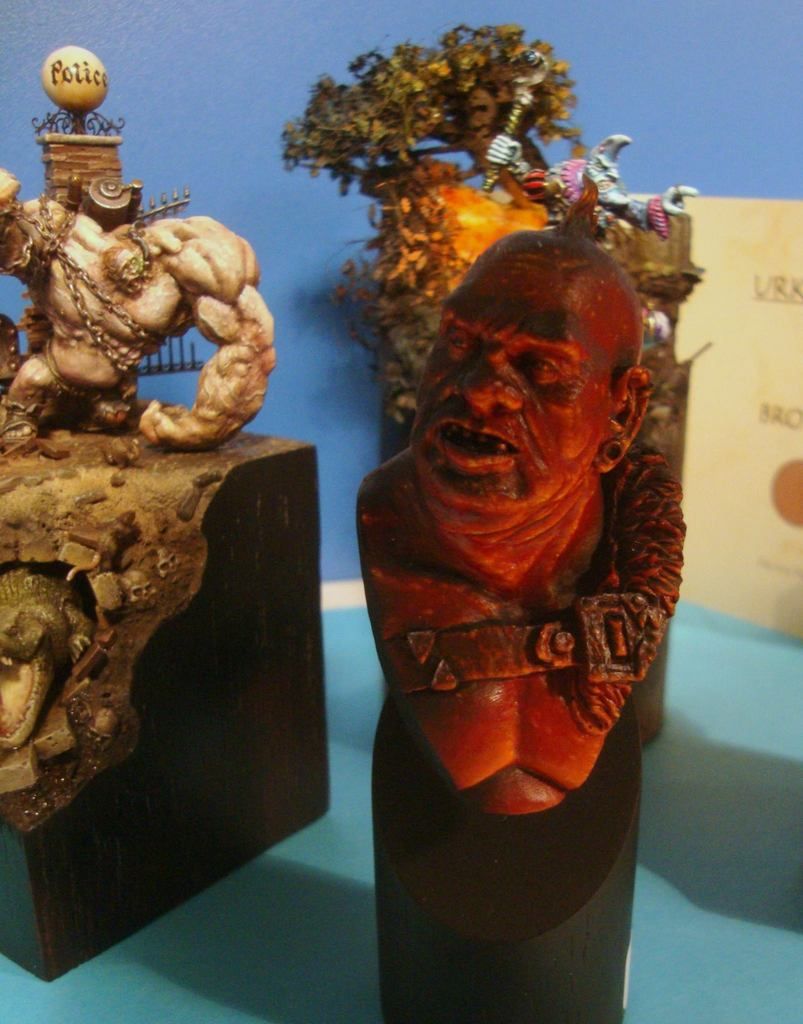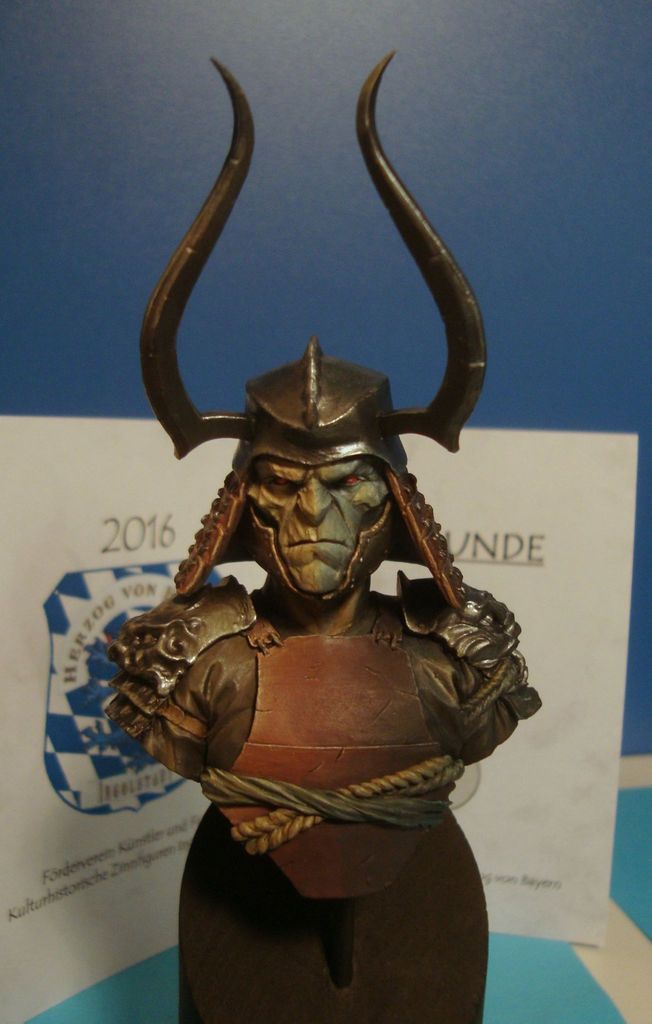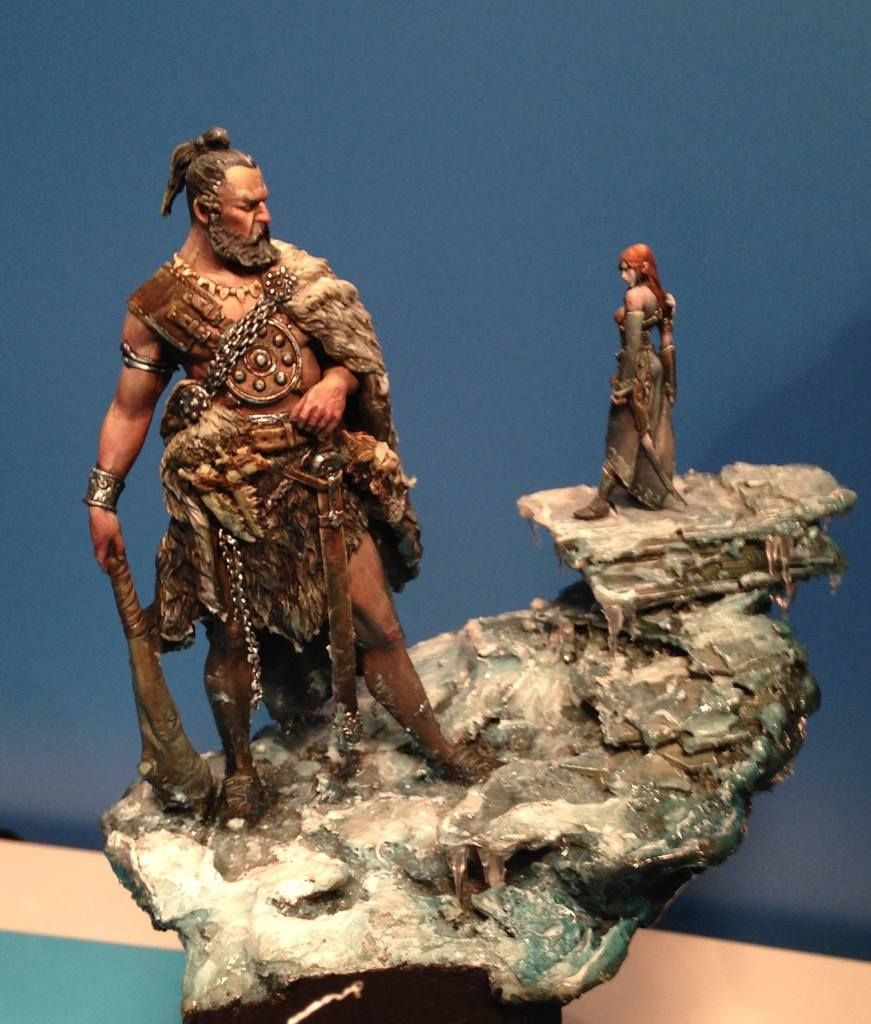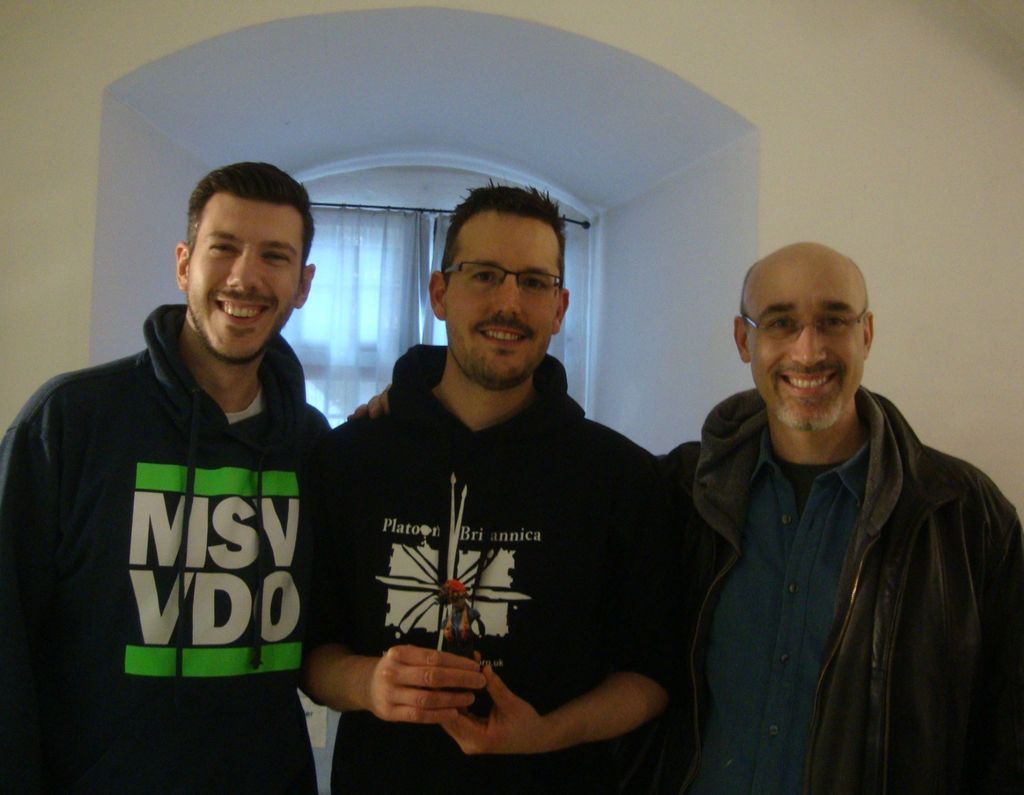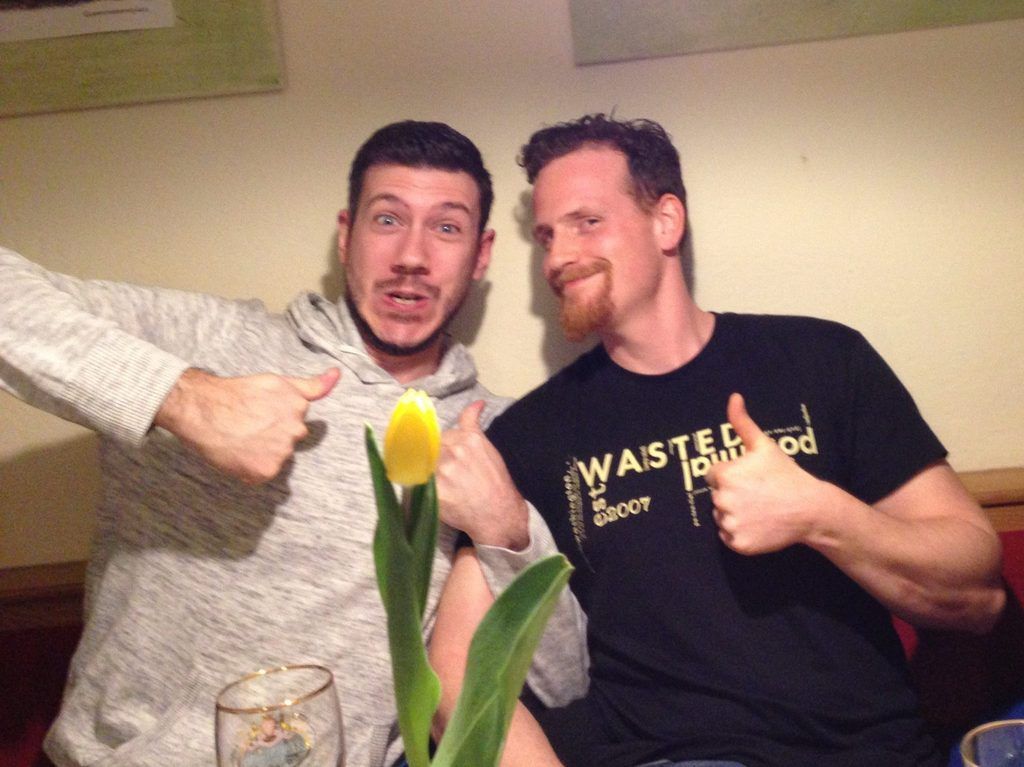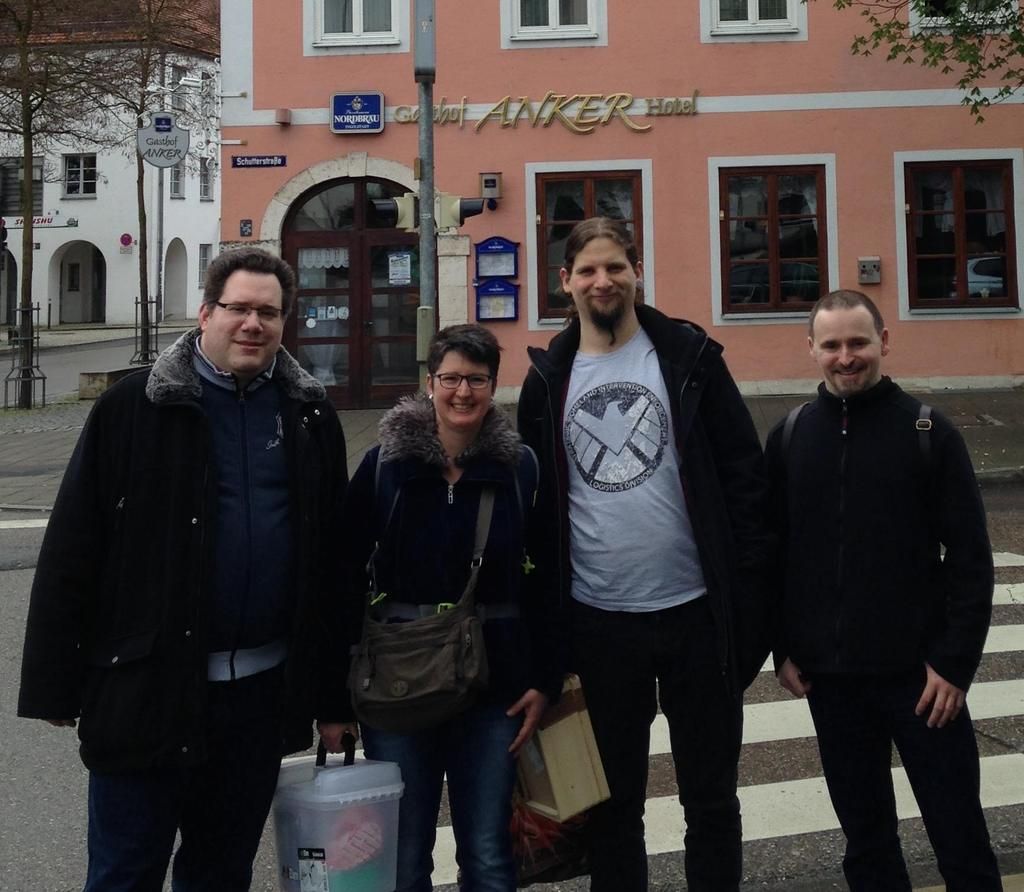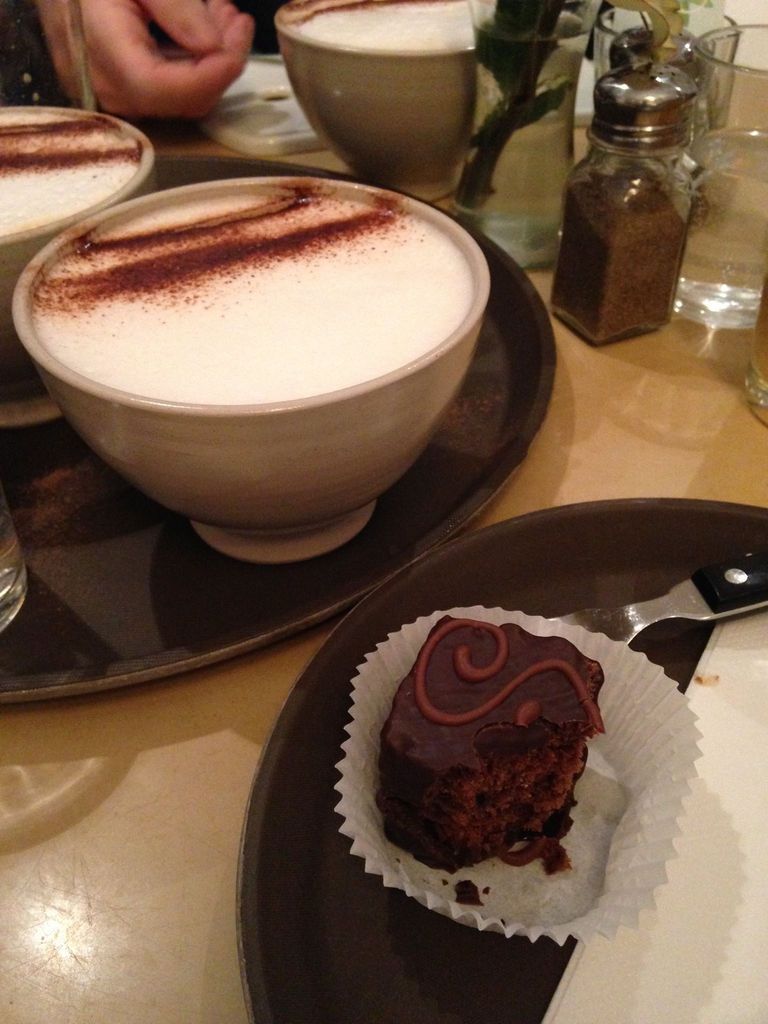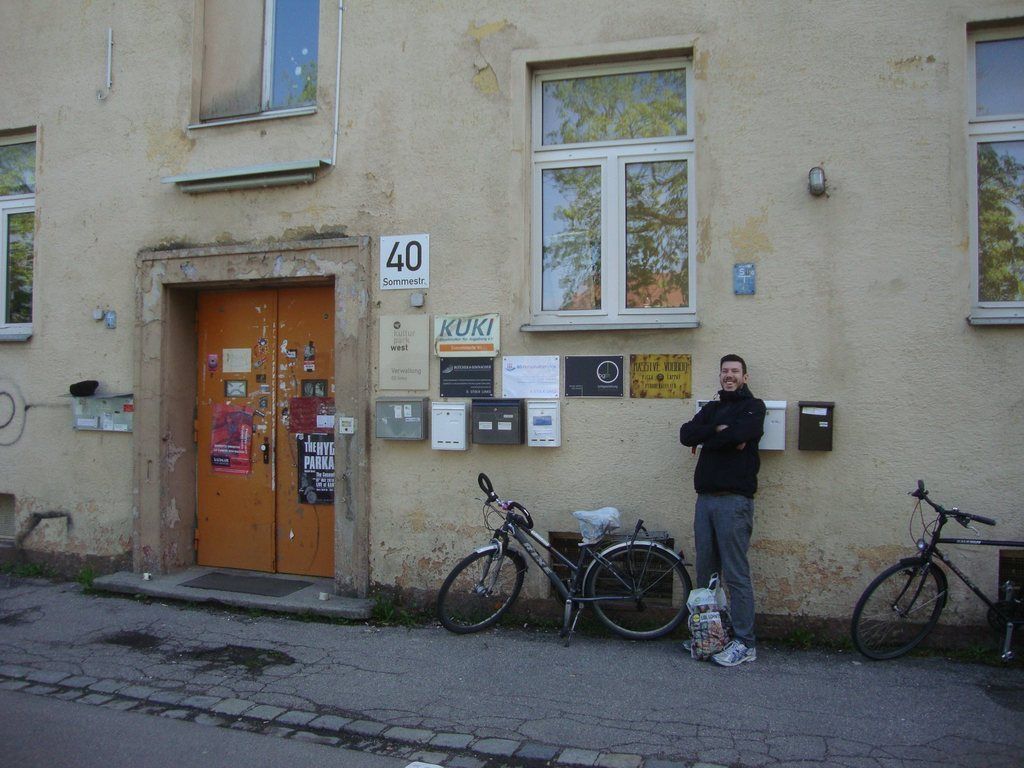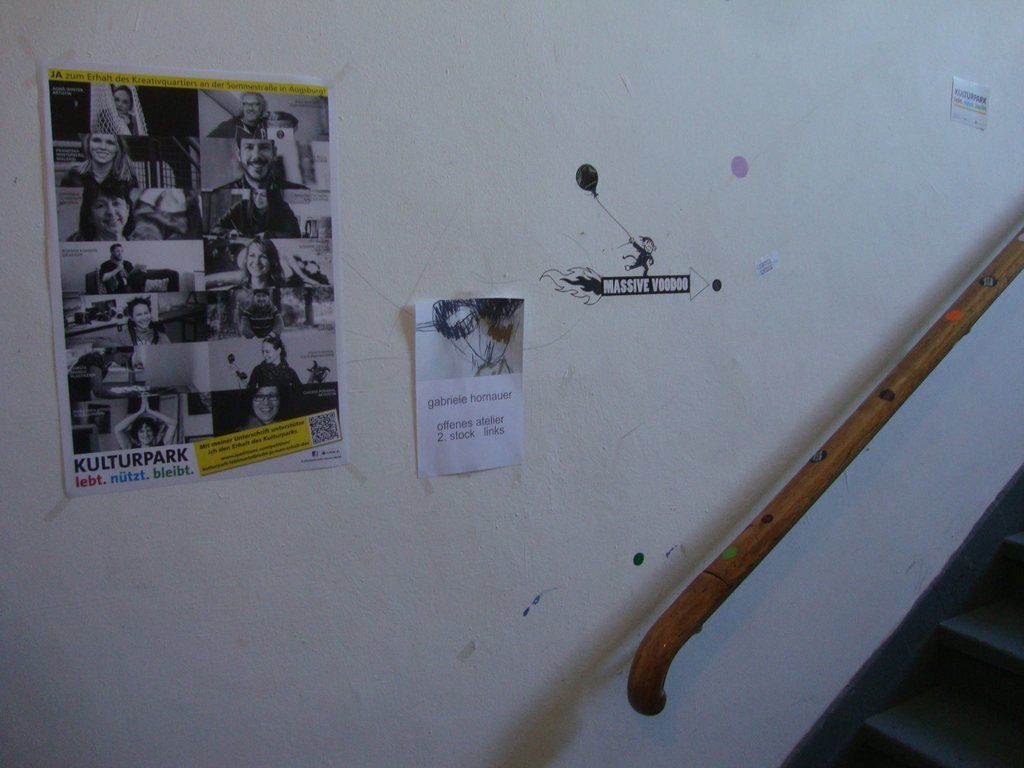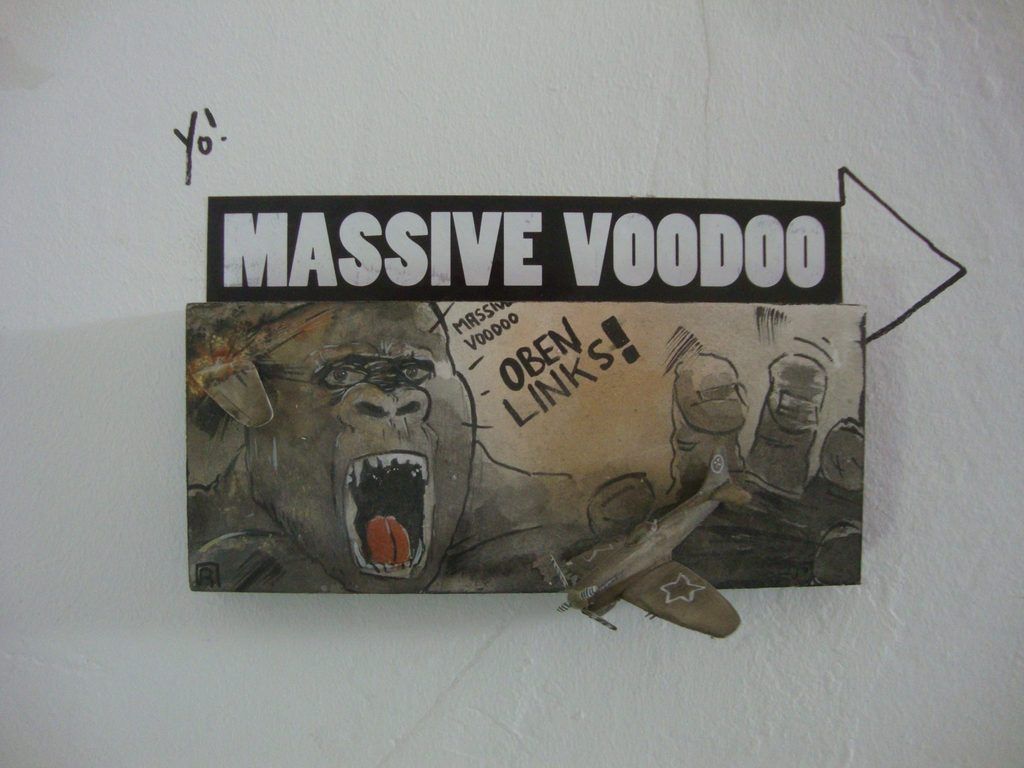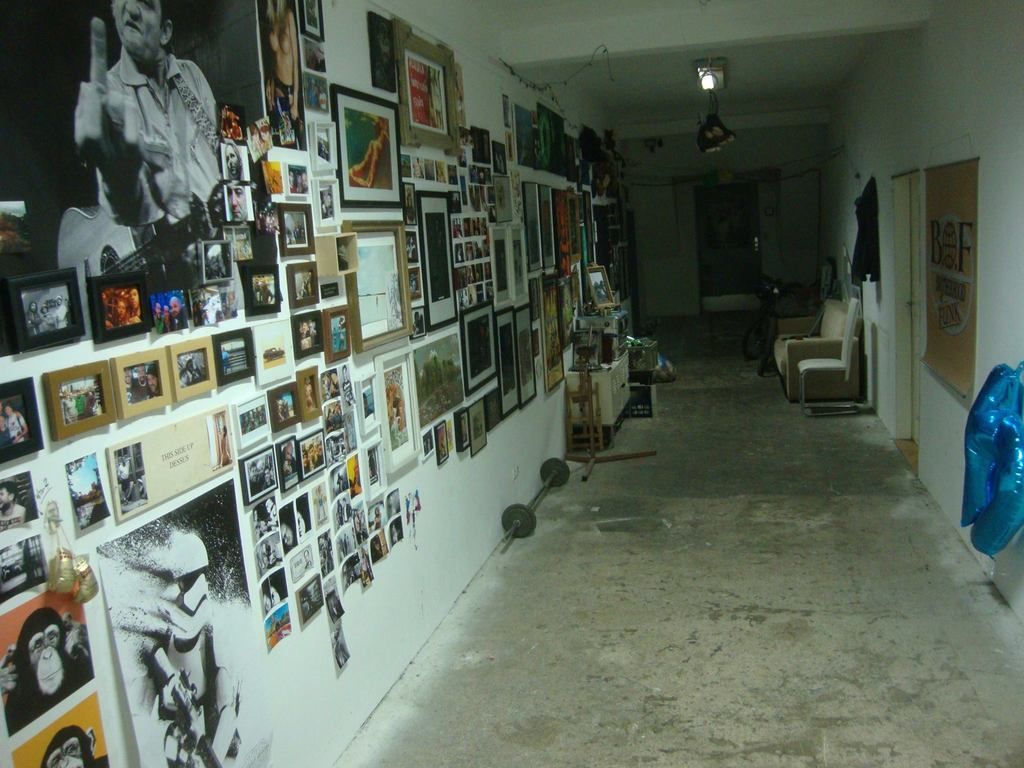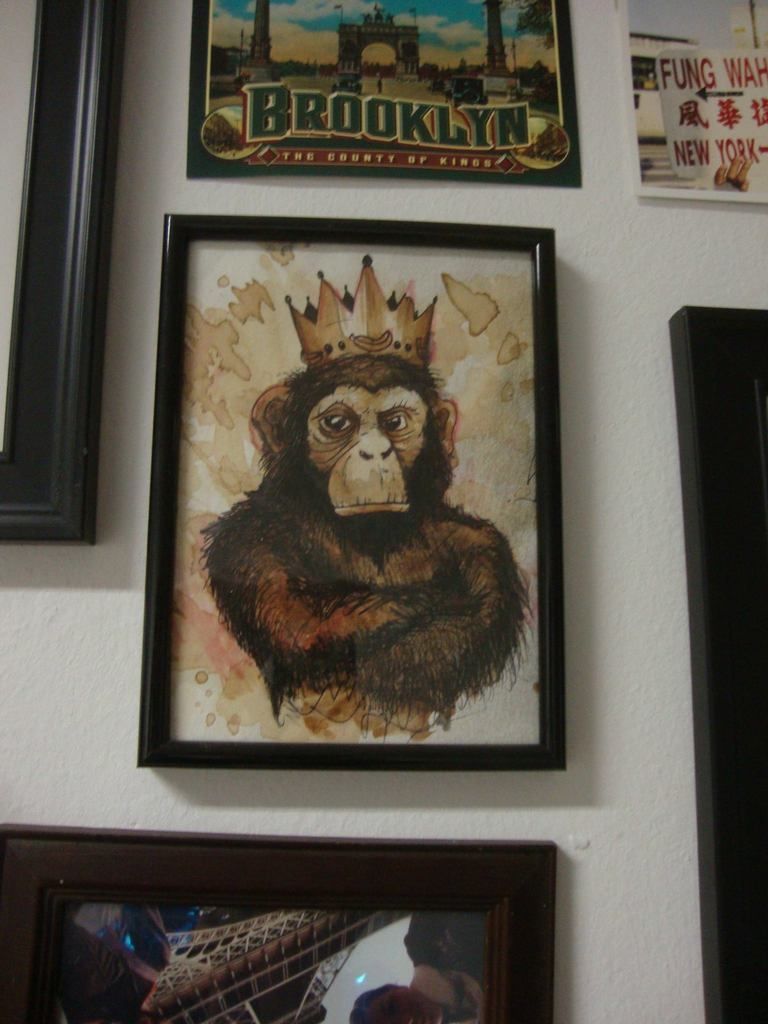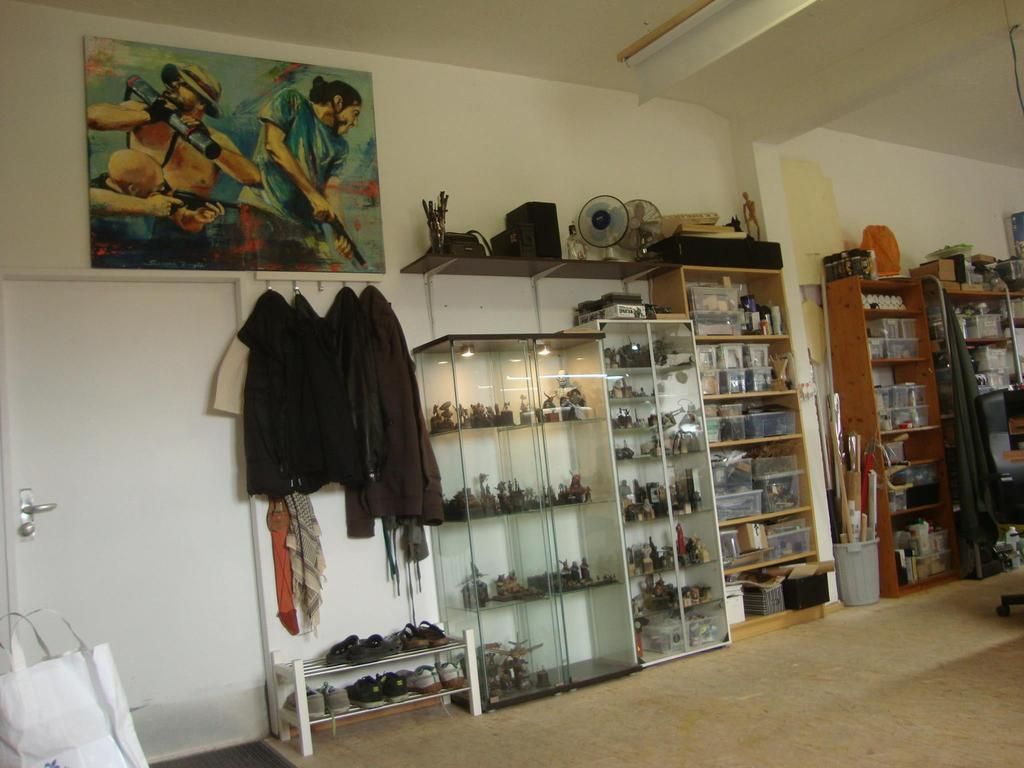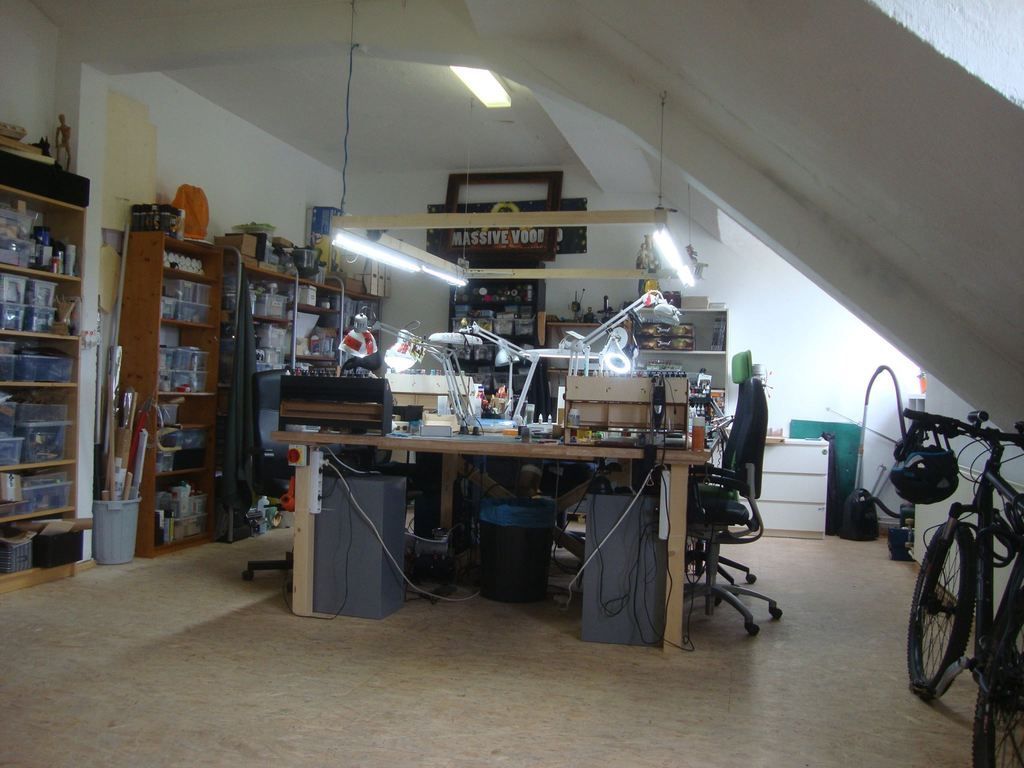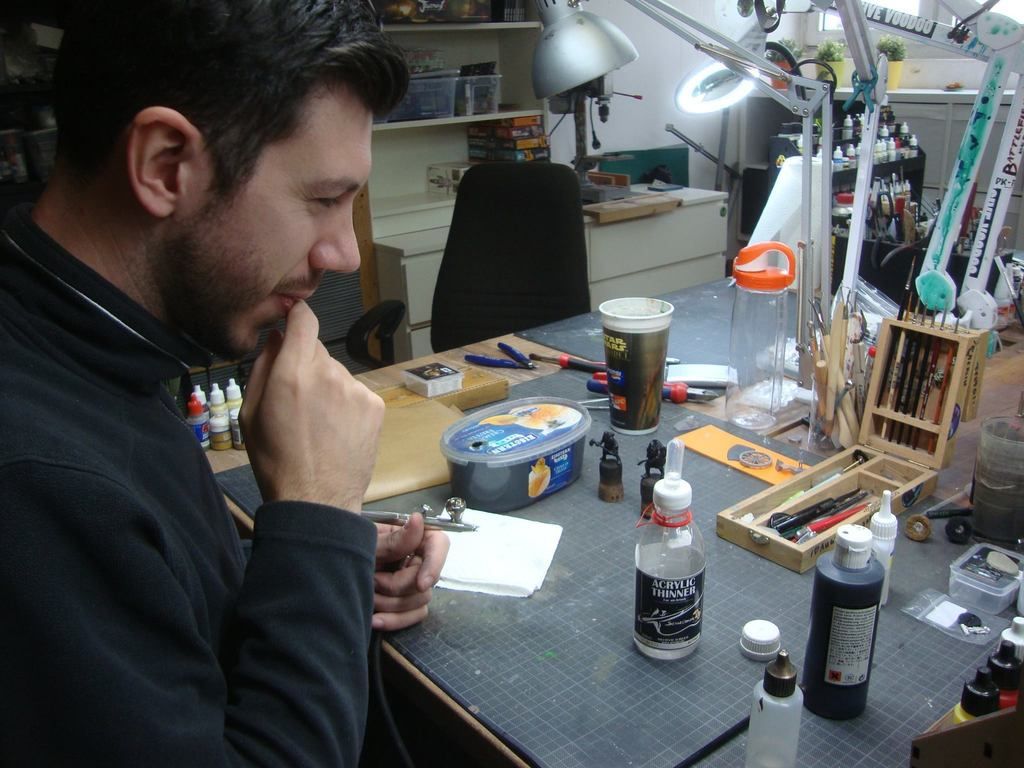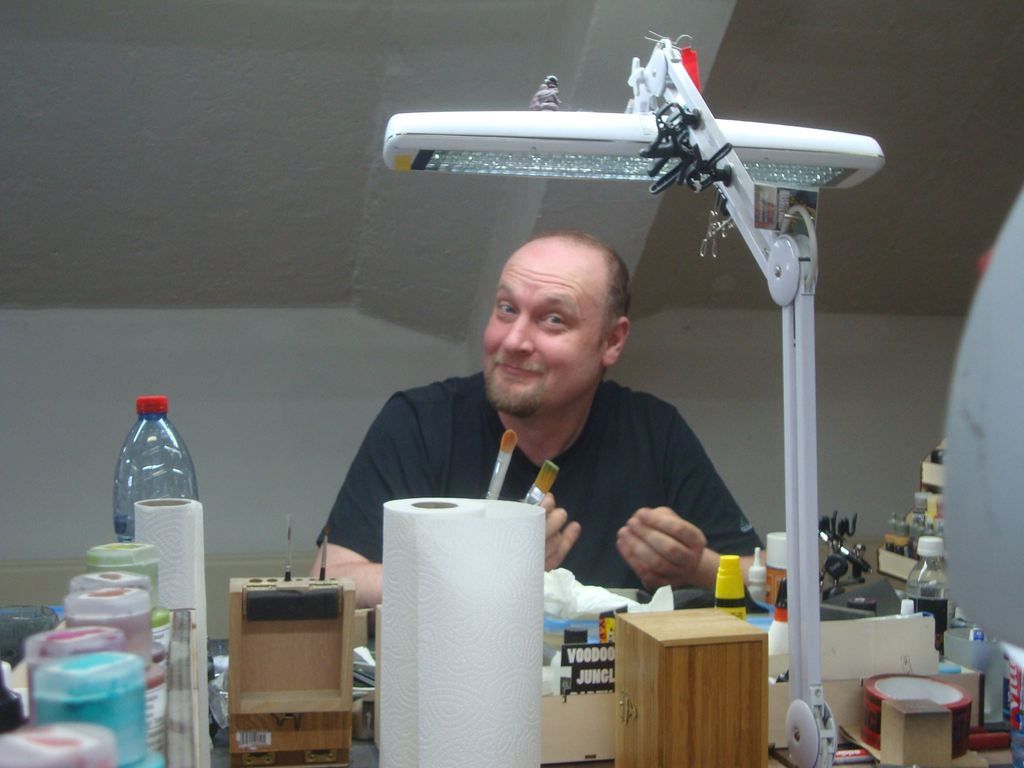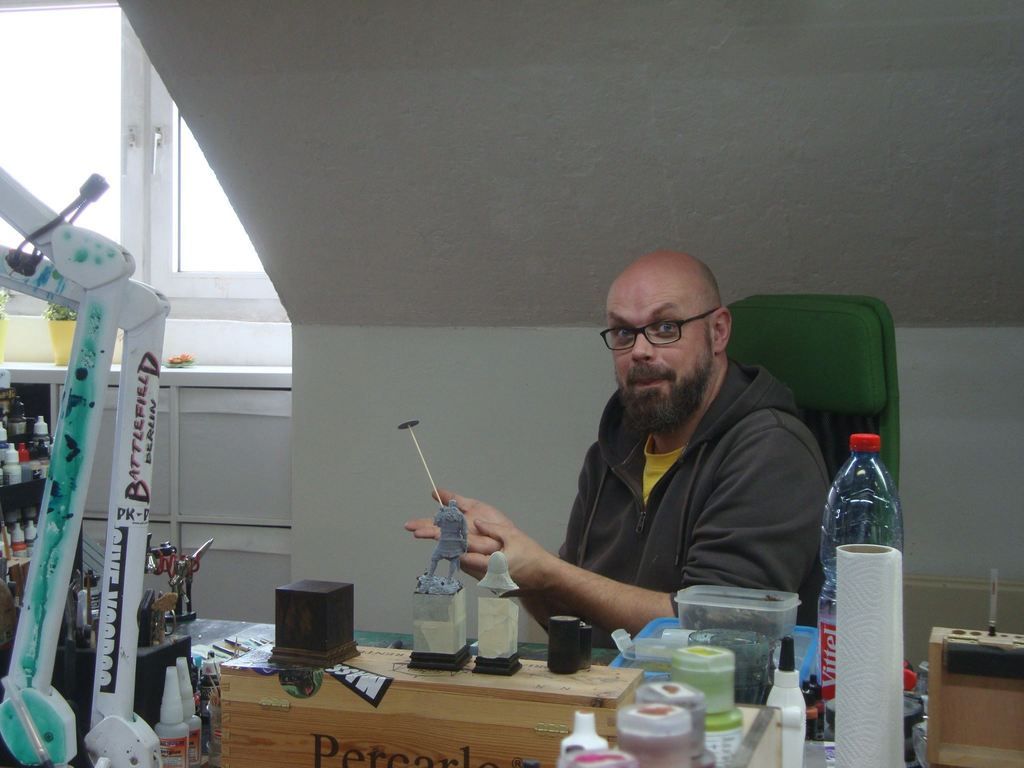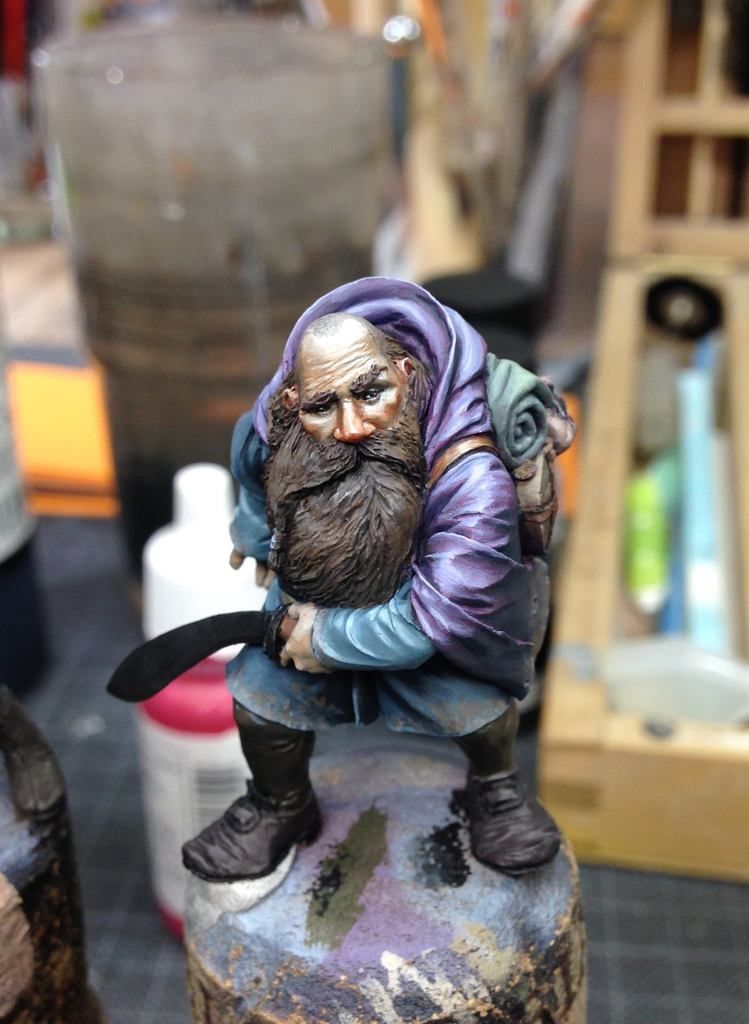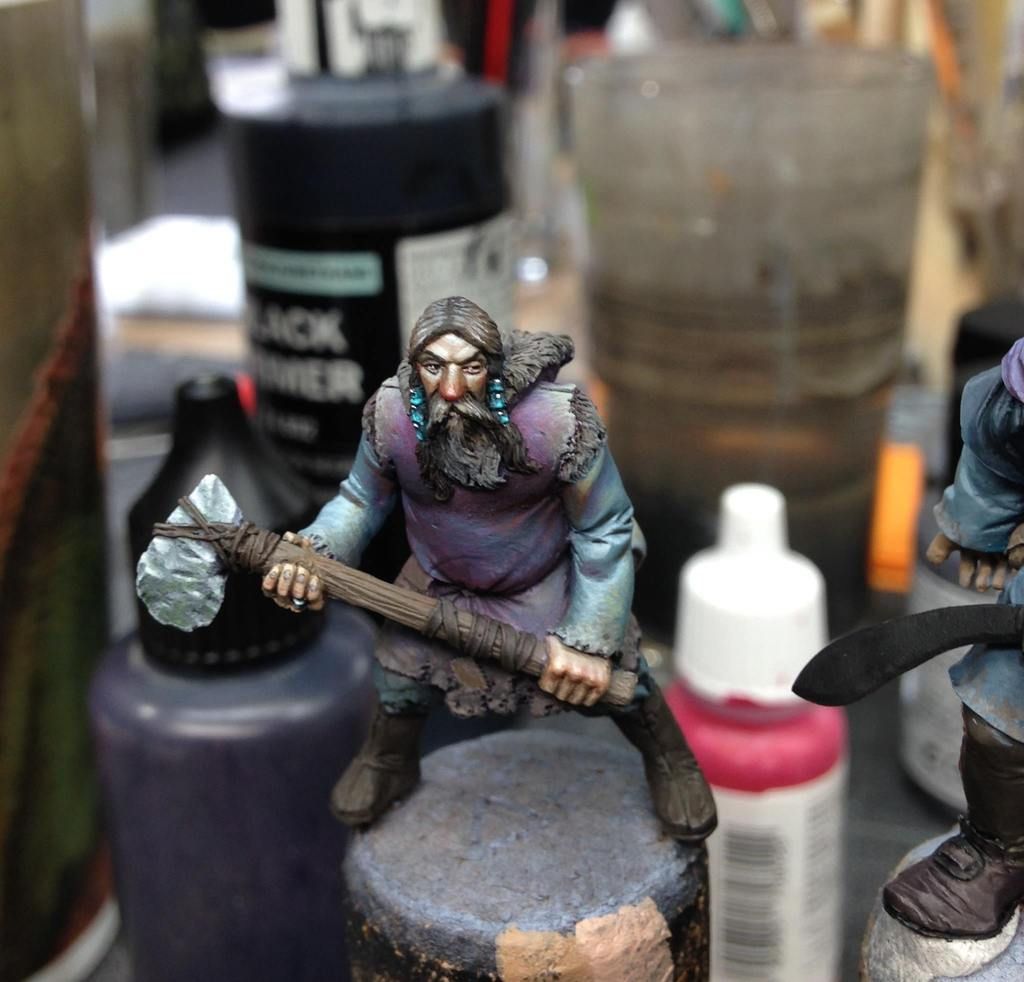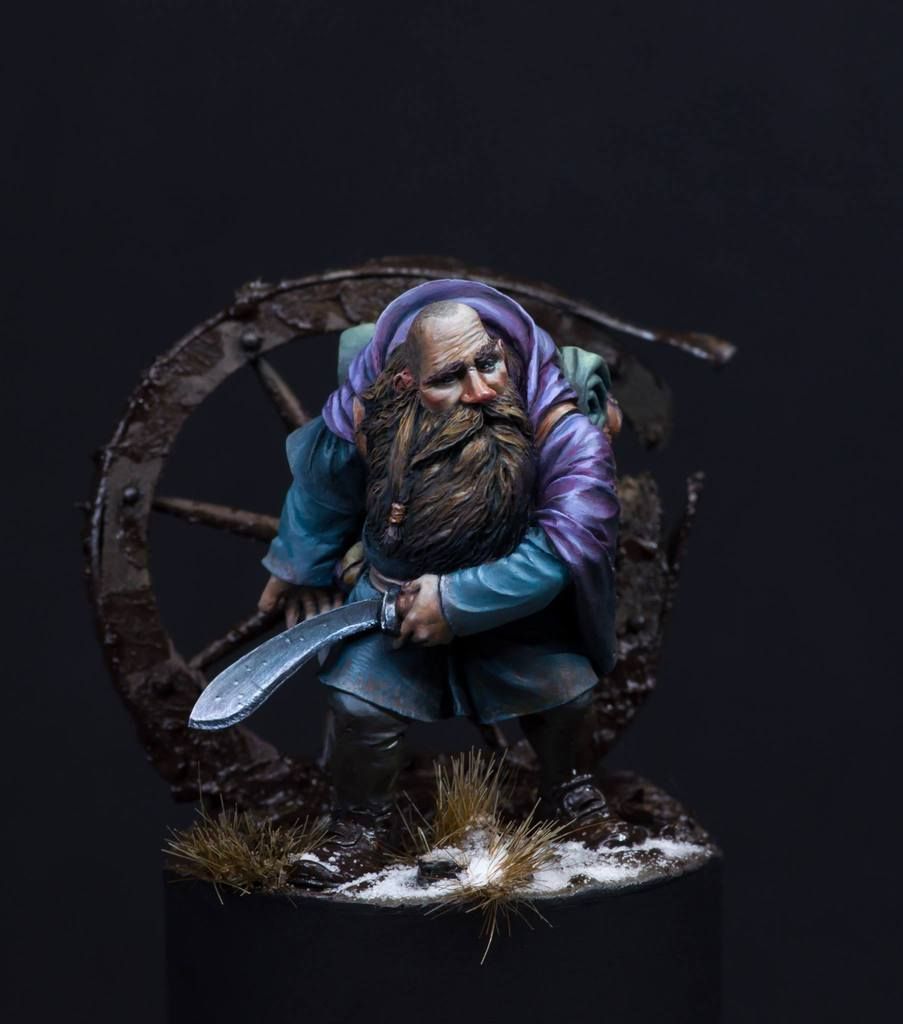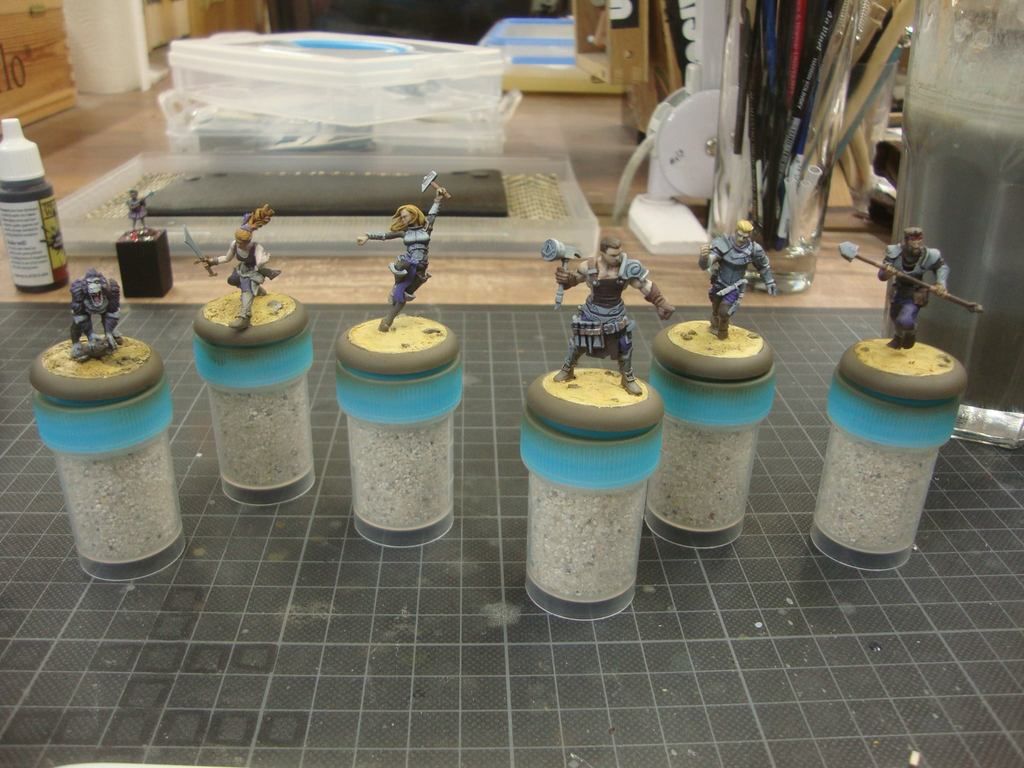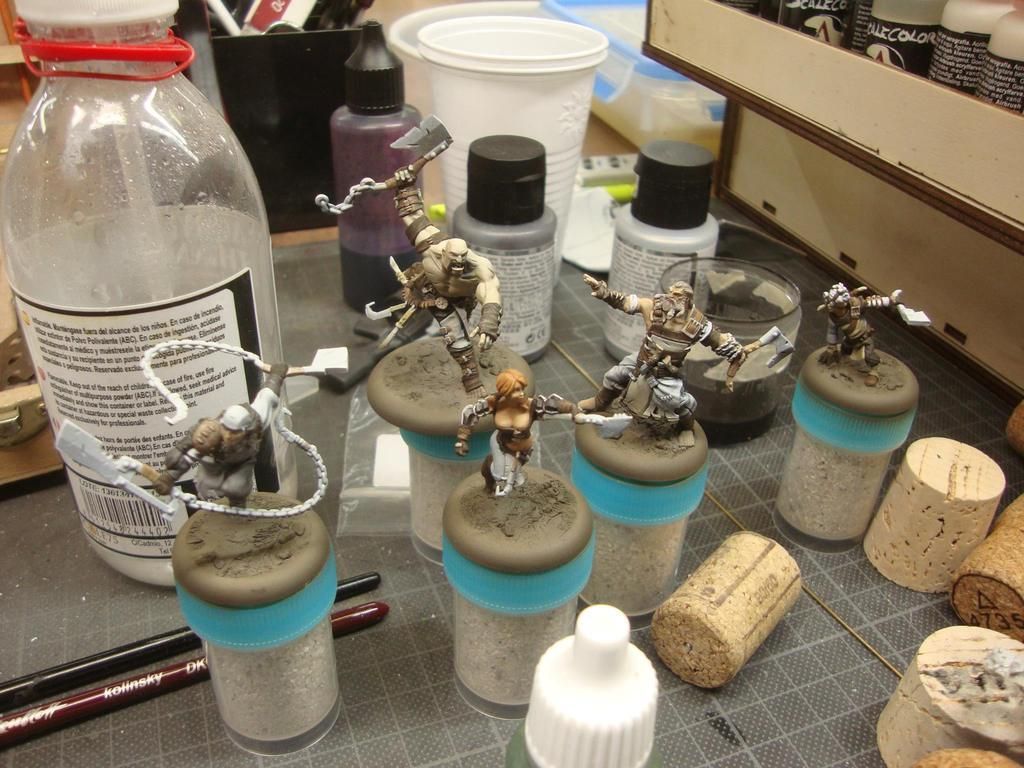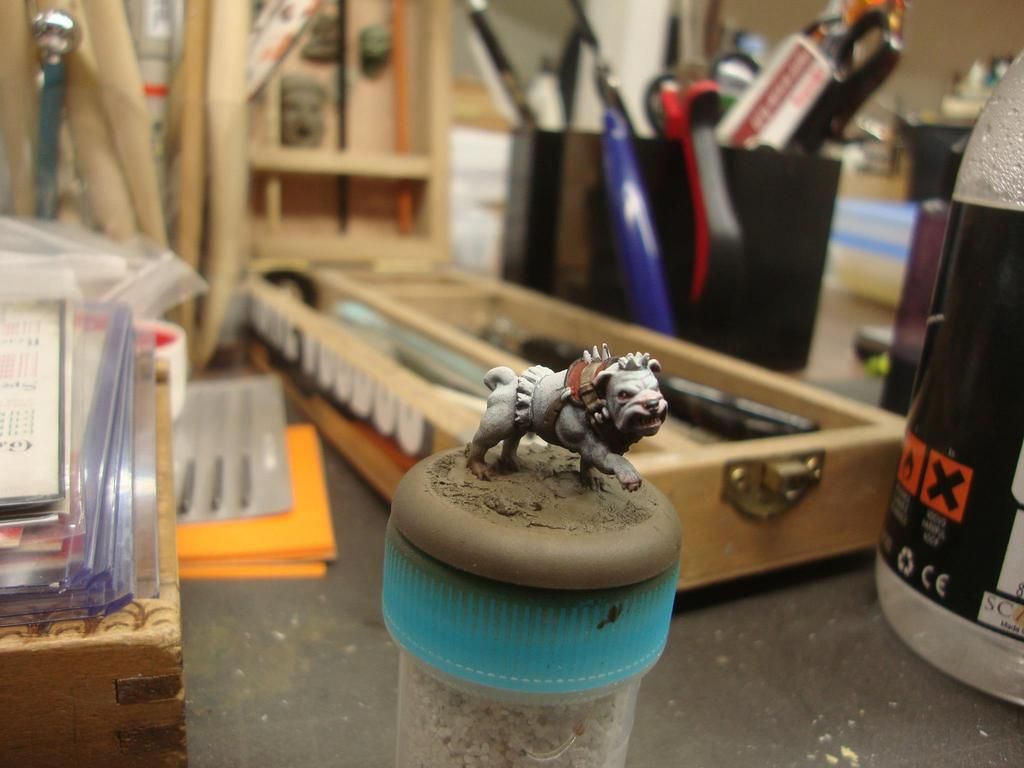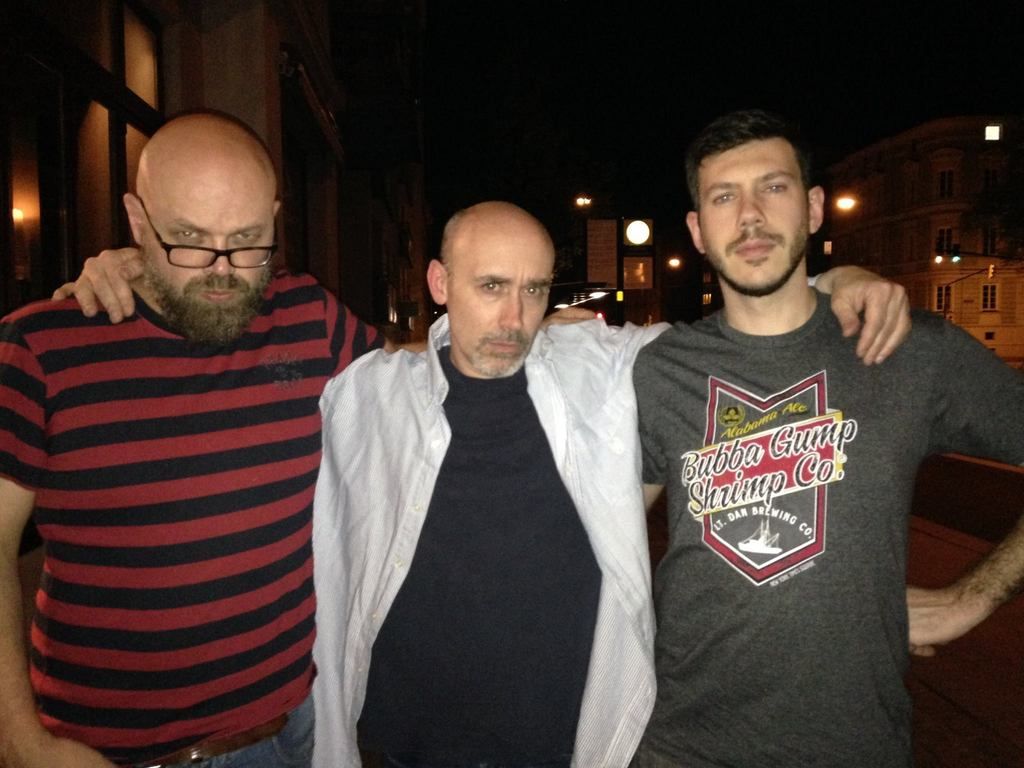 |
| Fishermen win the toss and opt to receive. The lineup l. to r.: Jac, Corsair (team captain), Salt (team mascot), Greyscales, Kraken, Sakana |
Now granted, I am primarily to blame for the long play-time. Chris makes his decisions relatively quickly, while I have been stuck in analysis paralysis. A big thanks to Chris for being patient, while I try to untie the Gordian Knot of my thought process.
The rest of this post is specific to Guild Ball, so be forewarned that I may be speaking some jargon.
 |
| Salt actually participates in the game and retrieves the kickoff! The tripod on the left are in a defensive position, but I think it would have worked better as a line. |
What I've been struggling to do is find patterns for the basic tactics of the game. I've been trying to identify a workhorse tactic or an intermediate building block, on which I can build a game-plan for the turn. I'm looking for a core mechanic that neutralizes an enemy model, either directly or positionally. But every neutralization is too short-lived for me to capitalize on it.
A Knocked Down model can be immediately recovered, and then the model can still Advance. A model can leave melee, at will, for very little cost. Fast movement, across or down-field, can be countered. The games that Chris and I play pretty much stalemate, as we counter each others' maneuvers and shenanigans.
 |
| Salt passes the ball to Sakana, who zips it up the sideline, behind the trees. |
I see nothing that can "pin", "disable", or otherwise neutralize an enemy model within the core rules. All of the neutralizations are immediately recoverable at low cost. A model can leave melee by accepting the low cost of a Parting Blow; recover from Knocked Down by spending Momentum; etc.
 |
| Salt chortles as he bathes in the glory of handling the ball twice in one game. |
In our game this weekend, even though I knew better after having a half-dozen games under my belt, I had in my brain for some reason that Knocked Down would keep a player Knocked Down until their next activation. And then, even when they stood up, their movement would be squandered. The resulting assumption was, "Knock 'em down, they ain't going anywhere." That conclusion, of course, was wrong. But that's the type of building block I'm looking for.
 |
| Oh, no! Honour screams down center-field, in a bid to threaten the innocent otter, steal his ball from him, and score a quick goal, all while picking on a cute, endangered species. Bitch! |
 |
| Salt shits little otter pellets on the field. |
I'm looking for "default patterns" or "initial conditions", so to
speak, which I can use as a foundation to think through each situational
case. Right now, each and every situation is entirely unique, and that
is what pushes me into analysis paralysis.
 |
| Salt manages to escape certain death and utter embarrassment. He carries the ball to his buddies and hides behind them. |
Does
"the edge" in Guild Ball reside only in combos and synergies? Does it depend on
planning sequences and constantly replanning sequences,
when the early-turn sequences are inevitably disrupted?
So, where my mind is at the moment is trying to identify "default missions" for each model's activation.
For example:
Sakana: Score a goal or take a position for a Snap Shot. Secondary: reduce Armor on a Mason.
Kraken: Knock Down and/or do Damage. Secondary: spoil opponent model's position.
Greyscales: Control the ball; Pass. Secondary: interfere as a Decoy.
Corsair: Control the ball; be aggressive. Secondary: spoil opponent model's position.
Jac: Spoil opponent model's position. Secondary: Be aggressive.
Salt: Recover and move the ball. Secondary: Don't die.
 |
| Jac pulls the ball away from the scrum. Will he have a chance to score?! |
So, where my mind is at the moment is trying to identify "default missions" for each model's activation.
For example:
Sakana: Score a goal or take a position for a Snap Shot. Secondary: reduce Armor on a Mason.
Kraken: Knock Down and/or do Damage. Secondary: spoil opponent model's position.
Greyscales: Control the ball; Pass. Secondary: interfere as a Decoy.
Corsair: Control the ball; be aggressive. Secondary: spoil opponent model's position.
Jac: Spoil opponent model's position. Secondary: Be aggressive.
Salt: Recover and move the ball. Secondary: Don't die.
 |
| Having been pummeled in the scrum, Tower finishes off Jac, dislodging the ball. Loose ball on the field! |
Finally, Chris and I decided to try the game with a chess clock. I think the chess clock will relieve the mental stress, actually. I won't care as much about my indecision or making mistakes. And the time will be spent more efficiently. Even if I'm making blundering mistakes, I'll be learning at a faster rate!
 |
| Salt recovers the ball! The faithful otter returns the ball to the possession of his team-mates. |
I was listening to the recent Episode 189 of the D6 Generation, and Craig Gallant pretty much had that experience, when he and his opponent added a chess clock. The other cool thing is that a chess clock will guarantee us two games in the time that we've been spending to play one!
 |
| All the wounded players return from the sideline. But this game is done. The Masons lose Mallet, and the Fishermen lose Corsair. The game is called at 4 to 4. Two take-outs to each side. |








